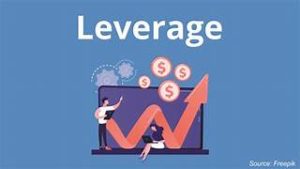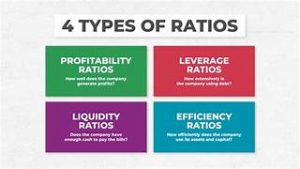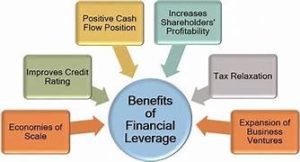How can I explain the power ratio?
It is a financial metric that measures the proportion of a company’s debt to its equity. It is often used to assess a company’s financial risk and solvency. Here’s a simplified explanation of the leverage ratio:
 Definition: The leverage ratio is calculated by dividing a company’s total debt by its equity. It shows how much debt a business uses to fund its assets compared to its equity.
Definition: The leverage ratio is calculated by dividing a company’s total debt by its equity. It shows how much debt a business uses to fund its assets compared to its equity.
Formula: The leverage ratio is expressed as a ratio or a percentage. The formula is:
Leverage Ratio = Total Debt / Total Equity
Interpretation:
- A higher power ratio shows that an industry relies more on debt financing, which can magnify returns and increase financial risk.
- A lower power ratio suggests that a company uses less debt than its equity, which generally indicates a lower level of financial risk but may also imply lower potential returns.
Significance:
- Investors and analysts use the leverage ratio to assess a company’s financial health and risk profile.
- Lenders also consider leverage ratios when determining whether to extend credit to a company.
- Different industries may have norms for acceptable leverage ratios, so comparing ratios within the same sector is essential.
Example:
- Suppose a company has a total debt of $1,000,000 and a total equity of $500,000. Its leverage ratio would be:
Leverage Ratio = $1,000,000 / $500,000 = 2
This means the company has $2 in debt for every $1 in equity.
Considerations:
- While a high leverage ratio can increase proceeds in good times, it can also amplify losses in bad times, as the company has higher fixed interest payments.
- Companies with high leverage ratios may need help servicing their debt during economic downturns or if they experience operational difficulties.
In summary, the leverage ratio provides insight into a company’s financial structure and risk profile by comparing its debt and equity. It’s an essential metric for investors, lenders, and analysts to estimate a company’s financial health and stability.
What is Leverage in the Financial Sector
In the financial sector, leverage refers to using borrowed funds to increase the possible return on investment. Financial institutions, including banks, investment firms, and hedge funds, commonly use leverage to amplify their trading positions and increase profitability. Here’s a more detailed explanation of leverage in the financial sector:
 Definition: Leverage in the financial sector involves using borrowed capital, such as loans or margin accounts, to increase the size of investment positions beyond what would be possible with only the investor’s capital.
Definition: Leverage in the financial sector involves using borrowed capital, such as loans or margin accounts, to increase the size of investment positions beyond what would be possible with only the investor’s capital.
Purpose: The primary purpose of leveraging in the financial sector is to enhance returns. Using leverage, financial institutions can control more prominent asset positions, leading to higher profits if the investment performs well. Leverage allows investors to generate higher returns on their investments than they could achieve with their capital alone.
Mechanics: Financial institutions can leverage their positions through various means, including:
- Sideline trading: Using assets from a trader to buy securities, using the securities themselves as collateral.
- Derivatives: Using financial instruments such as options, futures, and swaps, which allow investors to control a prominent position with a relatively small initial investment.
- Leveraged products: Invest in financial products like leveraged exchange-traded funds (ETFs) or leveraged contracts for difference (CFDs), specifically designed to amplify returns through leverage.
Risk: While leverage can magnify returns, it also increases the level of risk. Borrowed funds introduce the potential for more significant losses, as losses are amplified along with gains. High leverage levels can lead to considerable volatility in investment portfolios and even result in financial distress or bankruptcy if investments perform poorly.
Regulation: Many financial regulators restrict the amount of leverage financial institutions can use to prevent excessive risk-taking and maintain economic stability. For example, central banks may set capital adequacy requirements or limit margin trading to mitigate the systemic risk of highly leveraged institutions.
Impact on Stability: Excessive leverage played a significant role in the 2008 global financial crisis. Financial institutions had developed prominent positions using borrowed funds, which became unsustainable when the underlying assets declined. As a result, there is ongoing debate about the appropriate leverage levels and the effectiveness of regulatory measures to control it.
In summary, leverage in the financial sector involves using rented funds to increase the size of investment positions to enhance returns. While leverage can amplify profits, it also increases risk and can lead to financial instability if not managed carefully.

